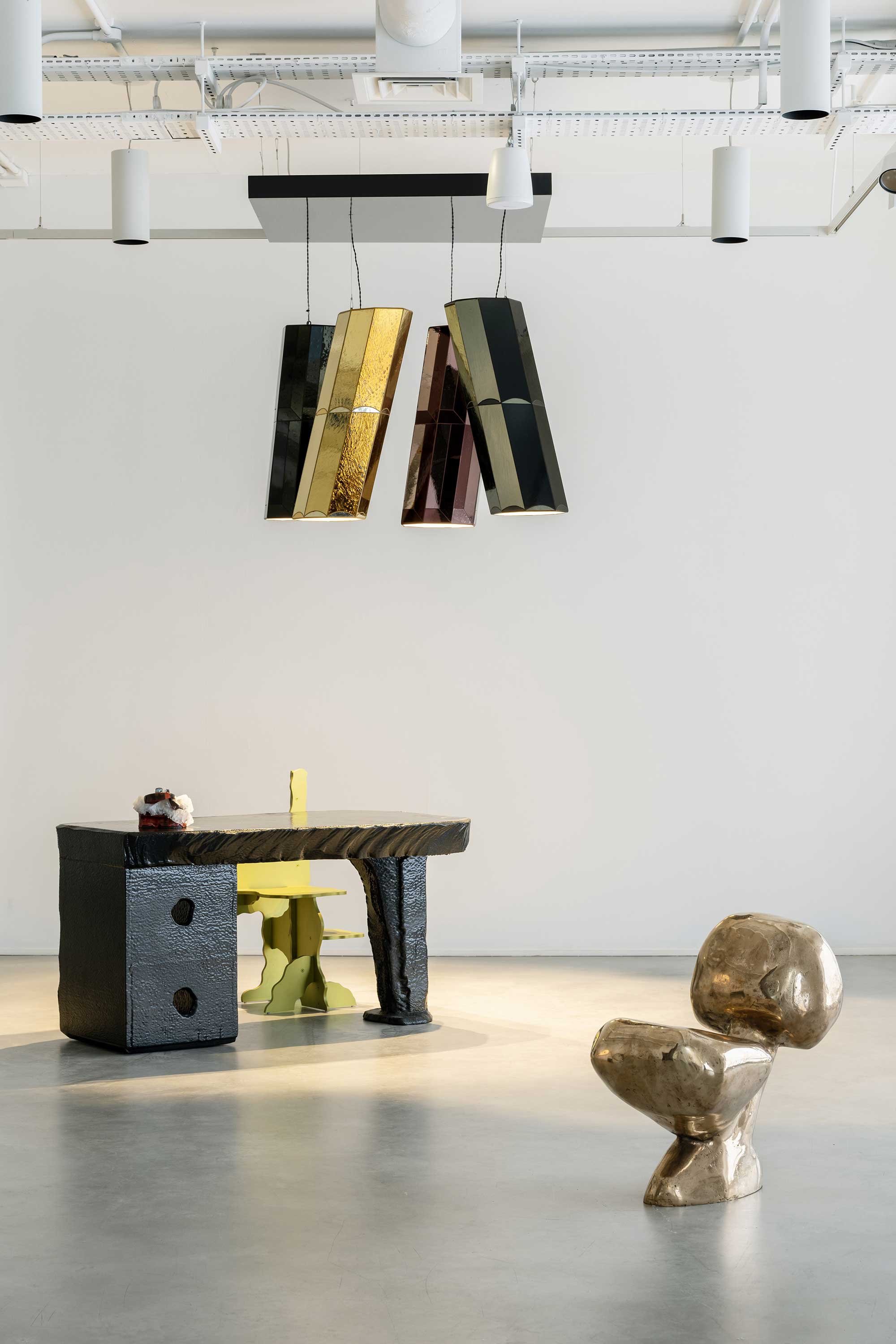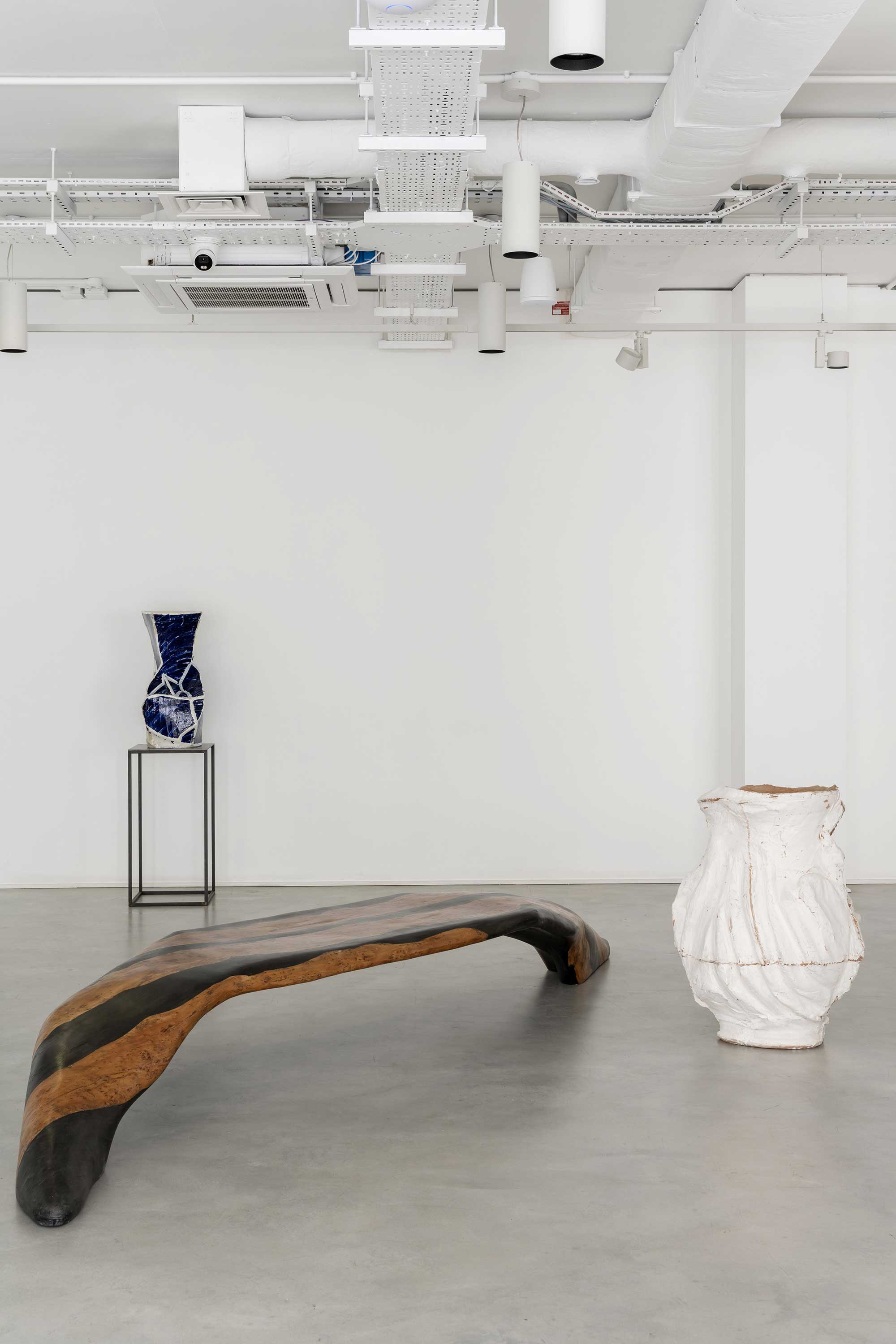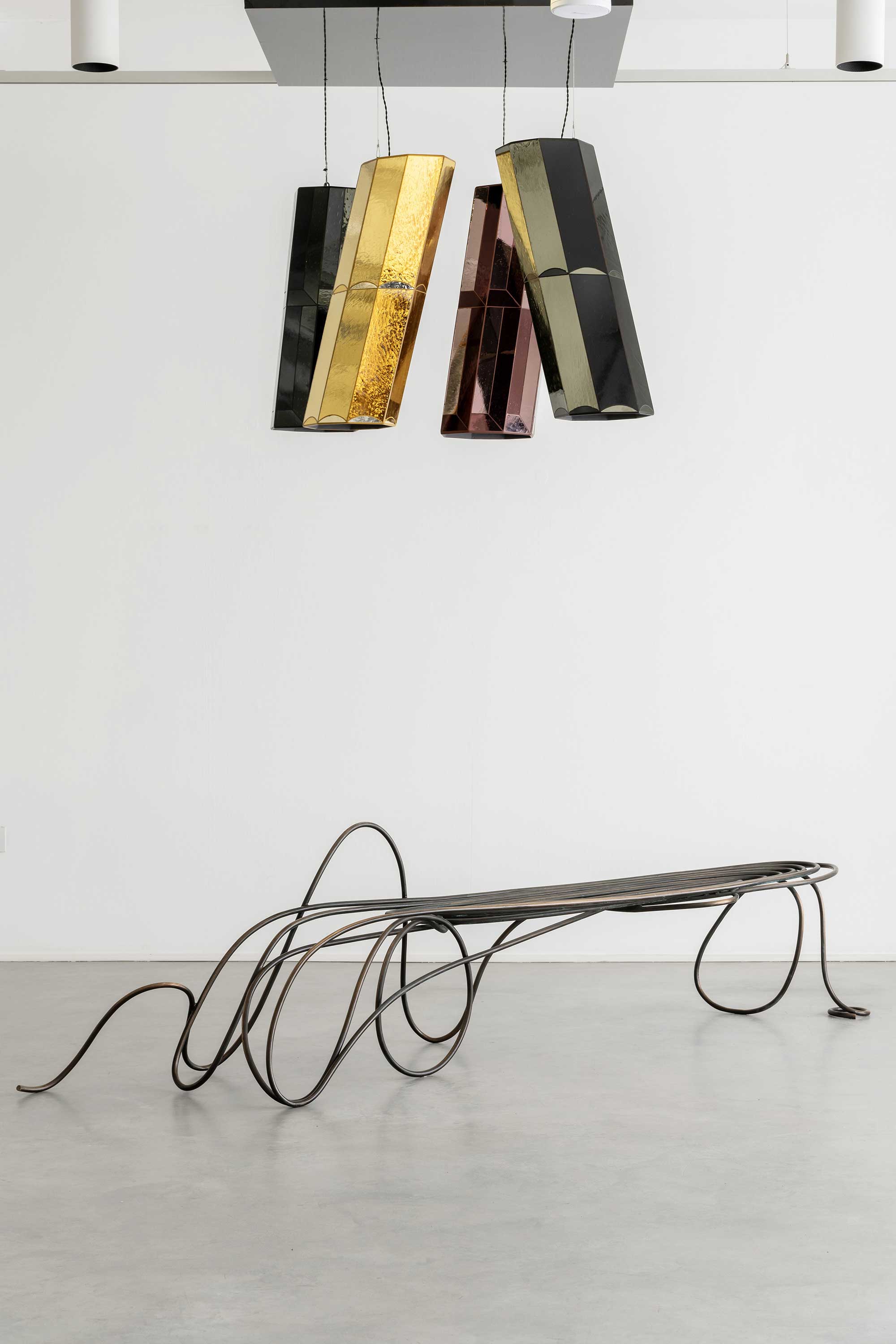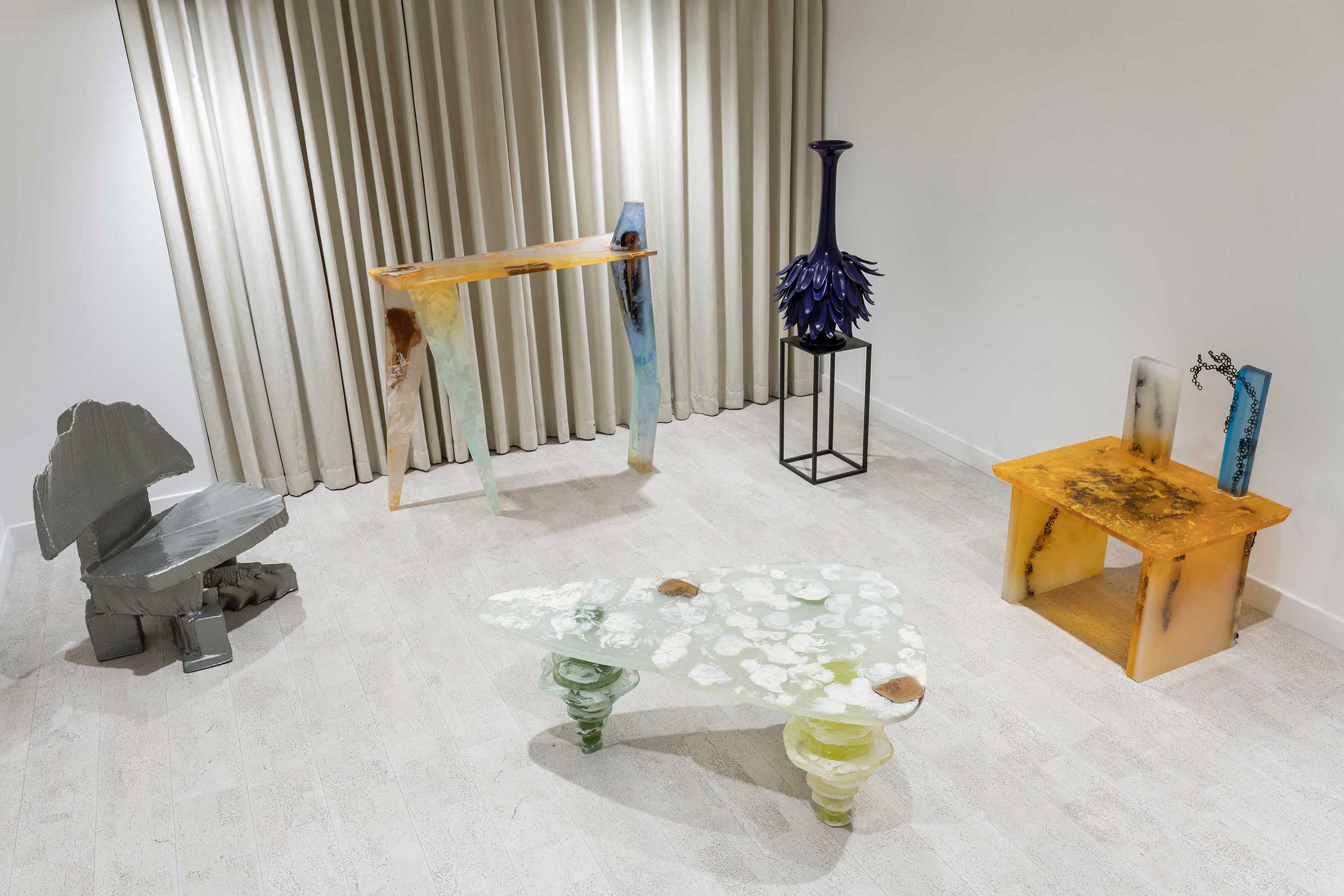An exhibition of Functional Sculptures at Gallery FUMI
“We investigate and worry and analyse and forget that the new comes about through exuberance and not through a defined deficiency.” These words were written by Anni Albers, the great German textile artist and colourist, as she measured the importance of craft and art in our daily lives.
Now a new exhibition at FUMI celebrates the imagination and innovation of the gallery’s artists, with work that walks the line between function and its narrative and aesthetic intentions. Over twenty pieces – some fresh from the studio – demonstrate a new confidence in the decorative art form and often reflect upon its history while giving it a future. The silversmith Shinta Nakajima, for example, has taken the traditional figurative language of his historic craft and reinvigorated it for the 21st century, in vessels and objects formed of furling foliage. He reemploys the Acanthus leaf – a symbol of rebirth that appears in decoration from the ancient Greek to the baroque – for what he terms its “spiritual function” while demonstrating his virtuosic skills in chasing.
The artistic pairing of ceramist Johannes Nagel and Atelier Lachaert Dhanis (artists who frequently subvert expectations through the medium of trompe l’oeil) has created a series that melds man and nature, with plinths made of teak roots supporting pots that are no more than a porcelain silhouette. British designer Max Lamb, on the other hand, lets nature speak for itself. His A14 chair from the project ‘My Grandfather’s Tree’ (2015) is simply carved from the point where a huge branch grew from the trunk of an old ash tree.
“We have found that collectors are increasingly comfortable with works that are challenging in both their materiality and their function,” says FUMI co-founder Valerio Capo. “They are delighted by the unexpected.”
Elsewhere in the exhibition, visitors will find Sam Orlando Miller’s exercise in negative space – a table called the Gusci di Ghiande, or Acorn – where spheres are painted to look like oak to appear like part of the natural world. Saelia Aparicio’s breast-clutching Harpy Chair comes from the mythical one, and Jochen Holz’s La Belle et La Bête table light from the land of fairytales. The last, with its unruly blown glass arms, seems to stagger across the surface on which it sits, an anthropomorphic variation on his Belle et La Bête chandelier, first shown in London last October.
The controlled chaos of Alex Hull’s Line table is a single length of rope, teased into the form of a three-dimensional table and cast in bronze, while Leora Honeyman’s Comfy Chair is anything but. Reading as a soft seat – an effect only enhanced by its luminescent coating of graduated pastel glaze – this is not a place to perch. But then the decorative world is one that often defies our expectations, in more ways than one.
Read more +
Read less -







 Sign in with email
Sign in with email













